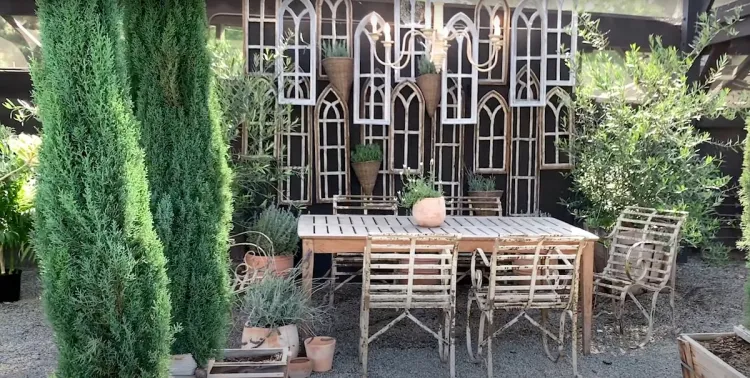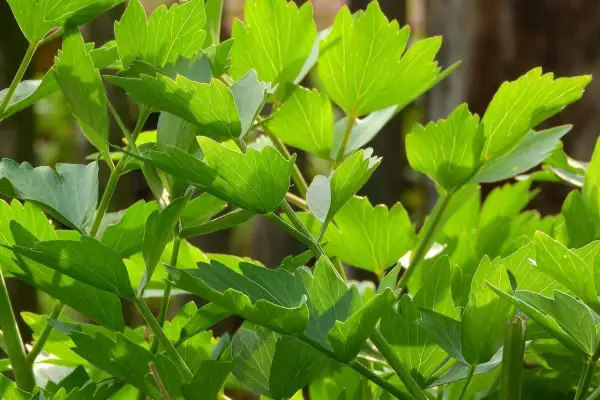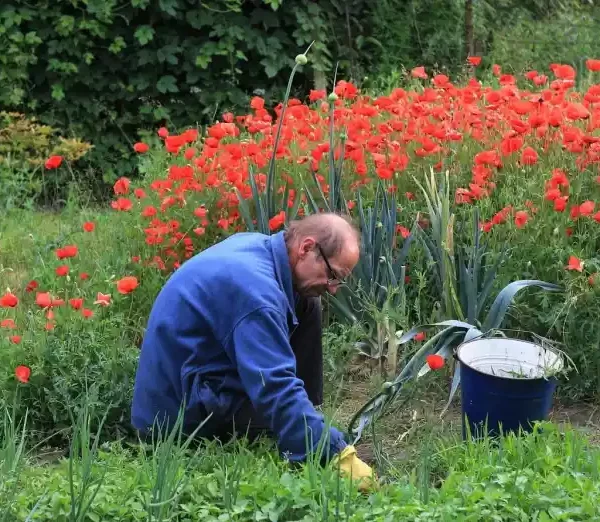Italy is renowned for its picturesque gardens filled with lush greenery, vibrant flowers, and aromatic herbs. Whether you’re looking to recreate the charm of an Italian garden in your own home or simply add a touch of Mediterranean flair to your landscape, incorporating these 20 plants will infuse your outdoor space with beauty, fragrance, and culinary delights.

Lavender (Lavandula spp.)
Lavender’s fragrant blooms and silvery foliage make it a quintessential plant for Italian gardens. It thrives in sunny, well-drained soil and is prized for its calming aroma and medicinal properties.
Rosemary (Rosmarinus officinalis)
Rosemary’s aromatic leaves add flavor to Italian cuisine and fragrance to the garden. This hardy herb thrives in sunny locations and requires minimal maintenance.
Lemon Tree (Citrus limon)
The lemon tree’s glossy foliage and fragrant blossoms evoke the sights and scents of the Italian countryside. It prefers a sunny, sheltered spot and produces tart, juicy fruit perfect for culinary use.
Olive Tree (Olea europaea)
Symbolizing peace and abundance, the olive tree is a staple of Italian landscapes. Its silvery-green foliage and gnarled trunk lend a timeless elegance to any garden.
Italian Cypress (Cupressus sempervirens)
Tall and slender, Italian cypress trees add vertical interest and architectural flair to Italian gardens. Their dark green foliage and upright growth habit create a stately backdrop.
Bougainvillea (Bougainvillea spp.)
Known for its vibrant bracts and sprawling growth habit, bougainvillea adds a burst of color to Italian gardens. Plant in a sunny, sheltered location for best results.
Grapevine (Vitis vinifera)
Grapes are synonymous with Italian cuisine and culture, making the grapevine a must-have for your garden. Train it along a pergola or trellis to create a shady retreat.
Italian Parsley (Petroselinum crispum neapolitanum)
Italian parsley’s flat leaves and robust flavor make it a staple in Mediterranean cooking. Plant it in rich, well-drained soil and harvest fresh leaves as needed.
Basil (Ocimum basilicum)
No Italian garden is complete without basil. This aromatic herb thrives in warm, sunny conditions and is perfect for making pesto, caprese salad, and other Italian dishes.
Thyme (Thymus vulgaris)
Thyme’s low-growing habit and delicate foliage make it a charming addition to rock gardens, borders, and herb beds. It prefers full sun and well-drained soil.
Rosa ‘Madame Alfred Carrière’
This climbing rose variety features fragrant, blush-pink blooms that add romance and elegance to Italian gardens. Train it along a wall or pergola for a stunning display.
Fennel (Foeniculum vulgare)
Fennel’s feathery foliage and licorice-like flavor add interest to Italian herb gardens. It attracts beneficial insects and can be used in salads, soups, and seafood dishes.
Artichoke (Cynara cardunculus)
Artichokes are not only delicious but also ornamental, with their architectural form and silvery foliage. Plant them in a sunny, well-drained spot and harvest the tender hearts for culinary use.
Sage (Salvia officinalis)
Sage’s velvety leaves and earthy flavor make it a versatile herb for Italian cooking. It prefers full sun and well-drained soil and is drought tolerant once established.
Italian Heirloom Tomato (Solanum lycopersicum)
Italian heirloom tomatoes come in a variety of shapes, sizes, and colors, adding visual interest and flavor to the garden. Plant them in fertile, well-amended soil for a bountiful harvest.
Mediterranean Fan Palm (Chamaerops humilis)
This compact palm species adds a touch of exoticism to Italian gardens with its fan-shaped fronds and clumping growth habit. Plant in a sunny, sheltered location for best results.
Chives (Allium schoenoprasum)
Chives’ slender leaves and delicate purple blossoms add a pop of color and flavor to Italian herb gardens. Plant them in well-drained soil and harvest fresh leaves as needed.
Lemon Verbena (Aloysia citrodora)
Lemon verbena’s lemon-scented foliage adds a refreshing aroma to Italian gardens. It thrives in sunny locations and can be used to make herbal teas, desserts, and potpourri.
Italian Oregano (Origanum vulgare subsp. hirtum)
Italian oregano’s pungent leaves and trailing growth habit make it a favorite for herb gardens and container plantings. It prefers full sun and well-drained soil.
Italian Bellflower (Campanula isophylla)
This charming perennial features bell-shaped flowers in shades of blue, purple, and white, adding a splash of color to Italian gardens. Plant it in rockeries, borders, or containers for a delightful display.
What are the essential plants for an Italian garden at home?
Essential plants for an Italian garden include lavender, rosemary, lemon tree, olive tree, Italian cypress, bougainvillea, grapevine, Italian parsley, basil, and thyme.
Can I grow lemon and olive trees in a home garden?
Yes, lemon and olive trees can thrive in home gardens, provided they receive adequate sunlight and well-drained soil. Consider planting them in large pots or containers if you have limited space.
Are Italian Cypress trees suitable for small gardens?
Italian Cypress trees have a tall, slender growth habit and may not be suitable for small gardens or confined spaces. Consider alternative evergreen trees with a more compact growth habit, such as dwarf varieties of conifers.
How do I care for grapevines in my garden?
Grapevines require full sun, well-drained soil, and regular pruning to thrive. Ensure they have sturdy support structures, such as trellises or pergolas, to train the vines and support the weight of the fruit.
What are some culinary uses for Italian herbs like basil and oregano?
Italian herbs like basil and oregano are commonly used in Mediterranean cuisine to flavor pasta dishes, pizzas, salads, sauces, and soups. Fresh herbs can also be infused into oils, vinegars, and marinades for added flavor.
Can I grow artichokes in a home garden?
Yes, artichokes can be grown in home gardens, but they require a long growing season and ample space to spread. Plant them in well-drained soil and provide regular water and fertilizer for optimal growth.
What are some companion plants for roses in an Italian garden?
Companion plants for roses in an Italian garden include lavender, sage, thyme, and rosemary. These aromatic herbs not only complement the beauty of roses but also attract beneficial insects and repel pests.
How do I propagate Mediterranean fan palms in my garden?
Mediterranean fan palms can be propagated from seeds or offsets (suckers) produced at the base of mature plants. Sow seeds in well-drained soil and keep them consistently moist until germination occurs. Offsets can be carefully separated and replanted in pots or directly in the ground.
Are Italian heirloom tomatoes suitable for container gardening?
Yes, Italian heirloom tomatoes can be grown in containers provided they have sufficient space, sunlight, and support. Choose compact or determinate varieties suited for container gardening and provide regular water and fertilizer for healthy growth.
How do I attract pollinators to my Italian garden?
To attract pollinators like bees and butterflies to your Italian garden, plant a variety of flowering plants, including lavender, rosemary, thyme, and bougainvillea. Avoid using pesticides and herbicides that may harm beneficial insects, and provide water sources like birdbaths or shallow dishes filled with rocks and water.
- Best THC Sodas to Buy in Arkansas - May 28, 2025
- Exploring THC-Infused Sodas in Arkansas - May 28, 2025
- THC Beverages Now Trending in Alabama - May 28, 2025




